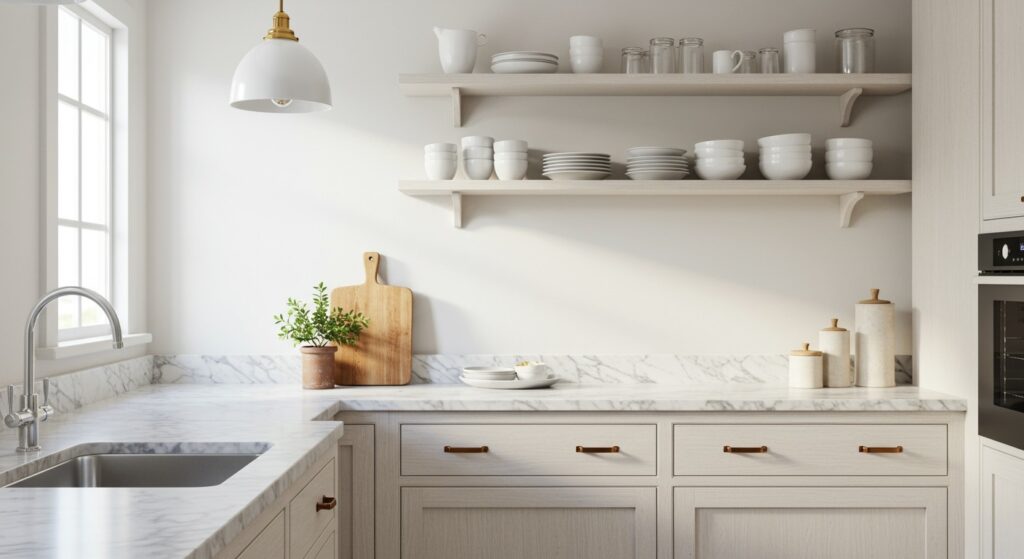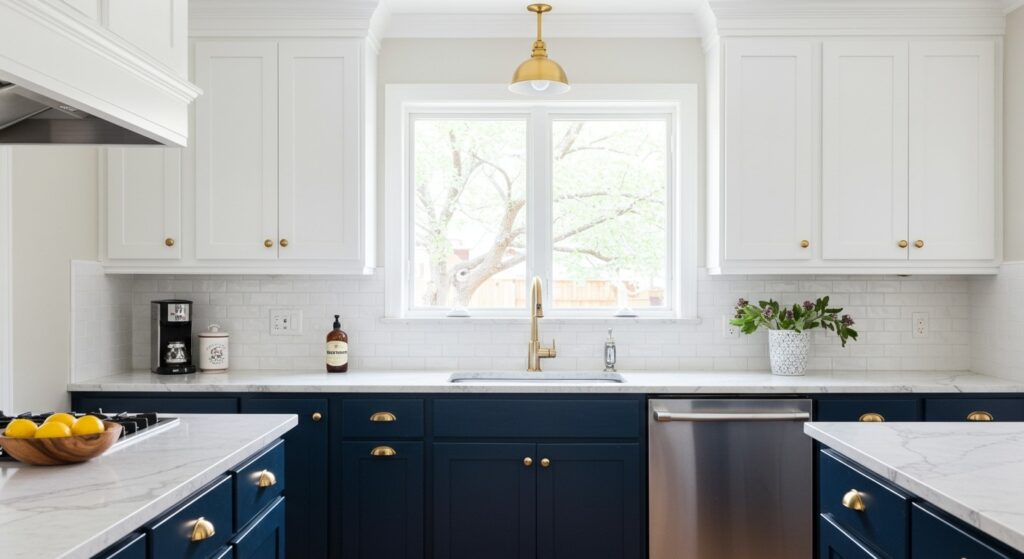There’s something deeply satisfying about walking into a kitchen where everything has its place. No pile of mail on the counter. No crowded windowsill. Just clean lines, open space, and room to actually cook.
Minimalist kitchen decor isn’t about stripping your space down to nothing. It’s about being intentional with what stays and what goes. Think fewer items, better quality, and a layout that makes daily cooking feel effortless instead of overwhelming.
The best part? You don’t need a complete renovation to get there. Small changes like clearing your counters, choosing cohesive colors, and hiding everyday clutter can completely shift how your kitchen feels.
Why Minimalist Kitchens Feel So Good
Cooking in a cluttered space is frustrating. You’re constantly moving things around just to find counter space for chopping vegetables or setting down a hot pan. A minimalist approach solves this by removing the excess.
When you limit what’s on display, cleaning becomes faster. There are fewer surfaces to wipe down and fewer objects collecting dust. It’s practical, not just pretty.
And honestly, there’s a calmness that comes with simple kitchen styling. Your eyes aren’t jumping from one decorative item to the next. Instead, you notice the architecture, the light, the materials. It’s surprisingly peaceful.
1. Start With Completely Clear Countertops
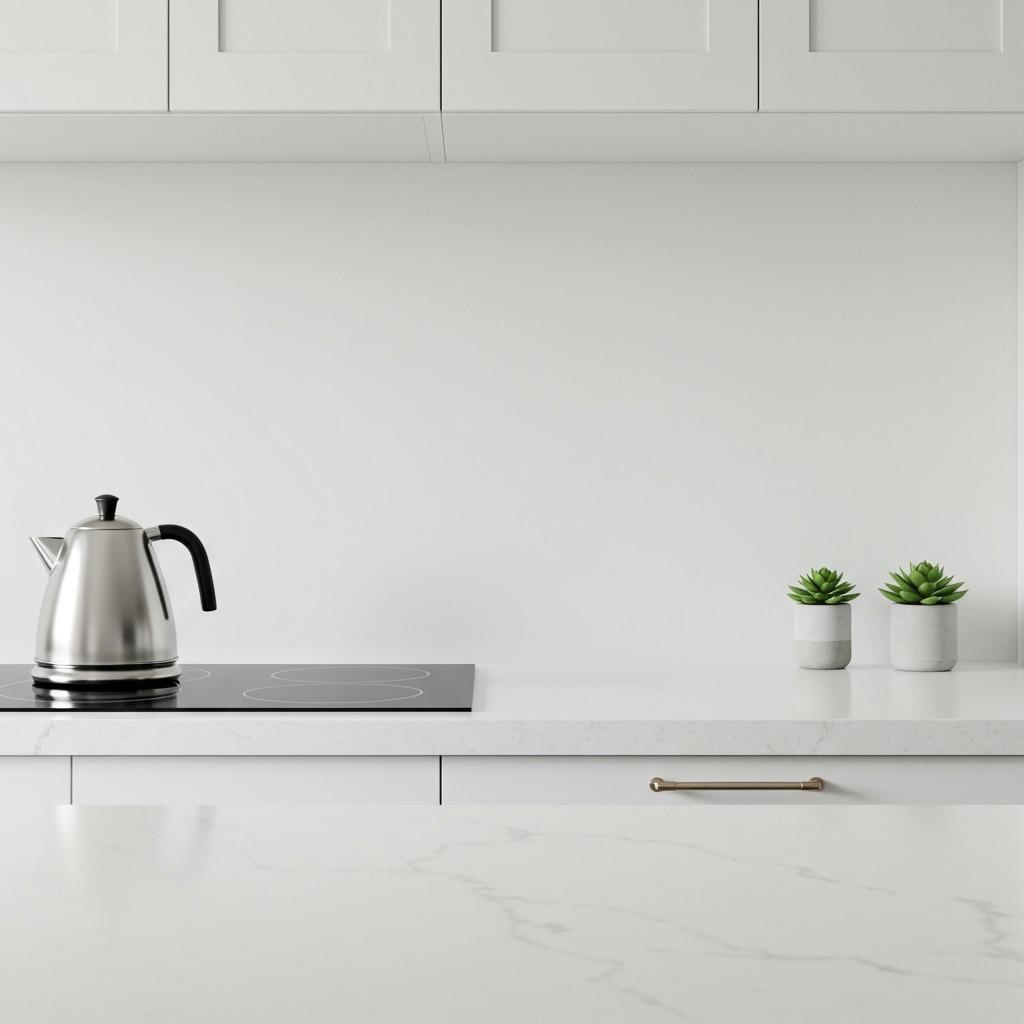
The fastest way to achieve minimalist kitchen decor is to clear everything off your counters. Everything. Then slowly add back only what you use daily.
Most of us keep appliances out “just in case,” but how often do you actually use that juicer or stand mixer? If it’s not weekly, it belongs in a cabinet. The same goes for decorative items that looked cute at the store but now just collect grease splatters.
What should stay? Maybe a coffee maker if you use it every morning. A knife block if you cook frequently. A bowl for keys or fruit if it serves a real purpose. But that’s about it.
The empty space itself becomes part of the design. Clean countertops make your kitchen feel larger and more functional. Plus, meal prep becomes so much easier when you’re not playing Tetris with small appliances.
2. Choose a Neutral Color Palette

Color plays a huge role in how calm or chaotic a space feels. Minimalist kitchens typically stick to a tight palette of two or three colors maximum.
White, gray, and natural wood tones are classic for a reason. They create a cohesive look that doesn’t compete for attention. But minimalism doesn’t mean boring. You could go with warm whites and honey-toned wood, or cool grays with black accents.
The key is repetition. If your cabinets are white, maybe your walls are a soft gray and your counters are white marble. Everything relates to everything else. There are no random pops of color breaking the flow.
This approach also makes Scandinavian kitchen decor incredibly easy to achieve. Those spaces rely on the same neutral foundation with natural materials and clean lines.
3. Hide Small Appliances Behind Cabinet Doors
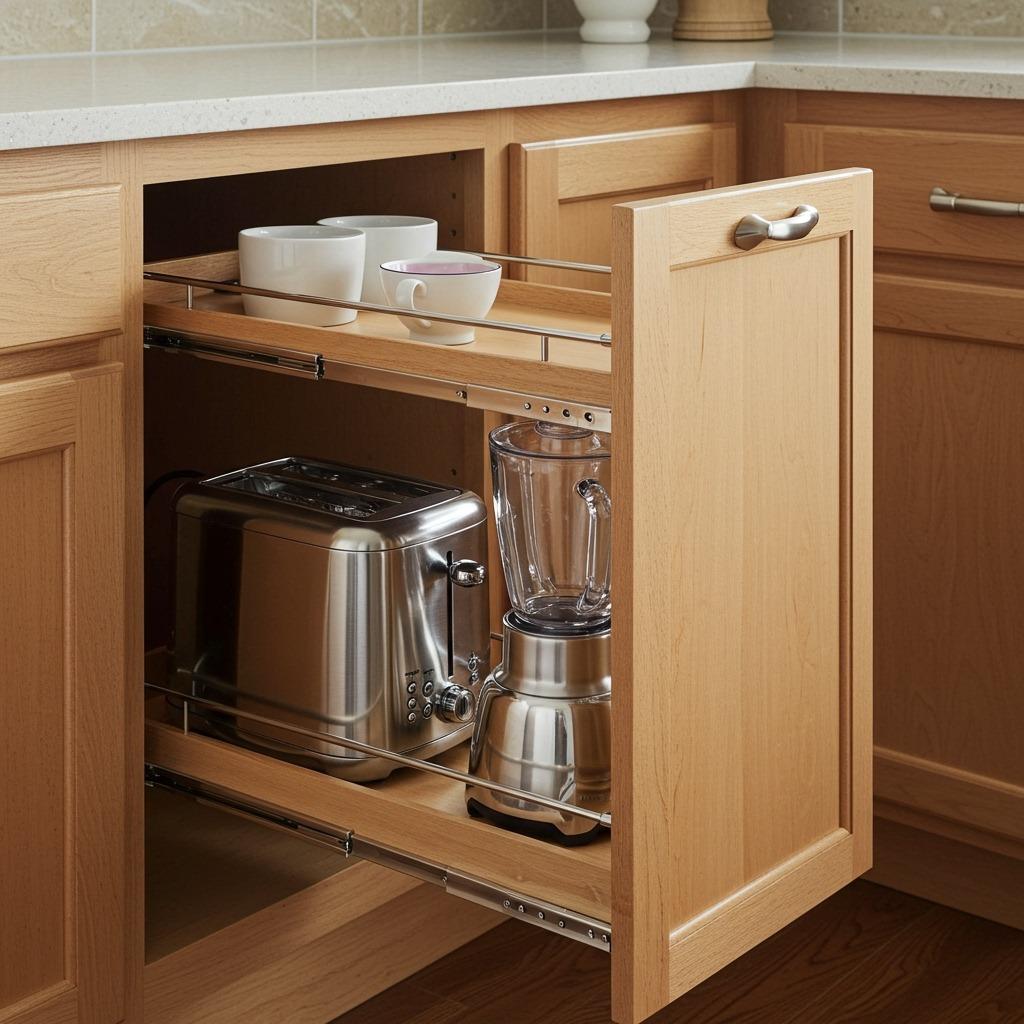
Even if you use your toaster every day, it doesn’t need to live on the counter. Creating dedicated cabinet space for small appliances keeps surfaces clear while keeping everything accessible.
Consider installing pull-out shelves in lower cabinets. You can slide out your stand mixer when you need it, then tuck it away when you’re done. Some people dedicate an entire cabinet or pantry shelf to appliances.
Appliance garages are another smart option. These are small cabinet spaces built into the counter, often in a corner, with a door that rolls up. Your coffee maker or toaster stays plugged in but hidden behind a door when not in use.
The goal isn’t to make cooking harder. It’s to eliminate visual noise so your kitchen feels open and calm. When everything has a home behind closed doors, maintaining clean countertops becomes automatic.
4. Use Open Shelving Sparingly and Intentionally
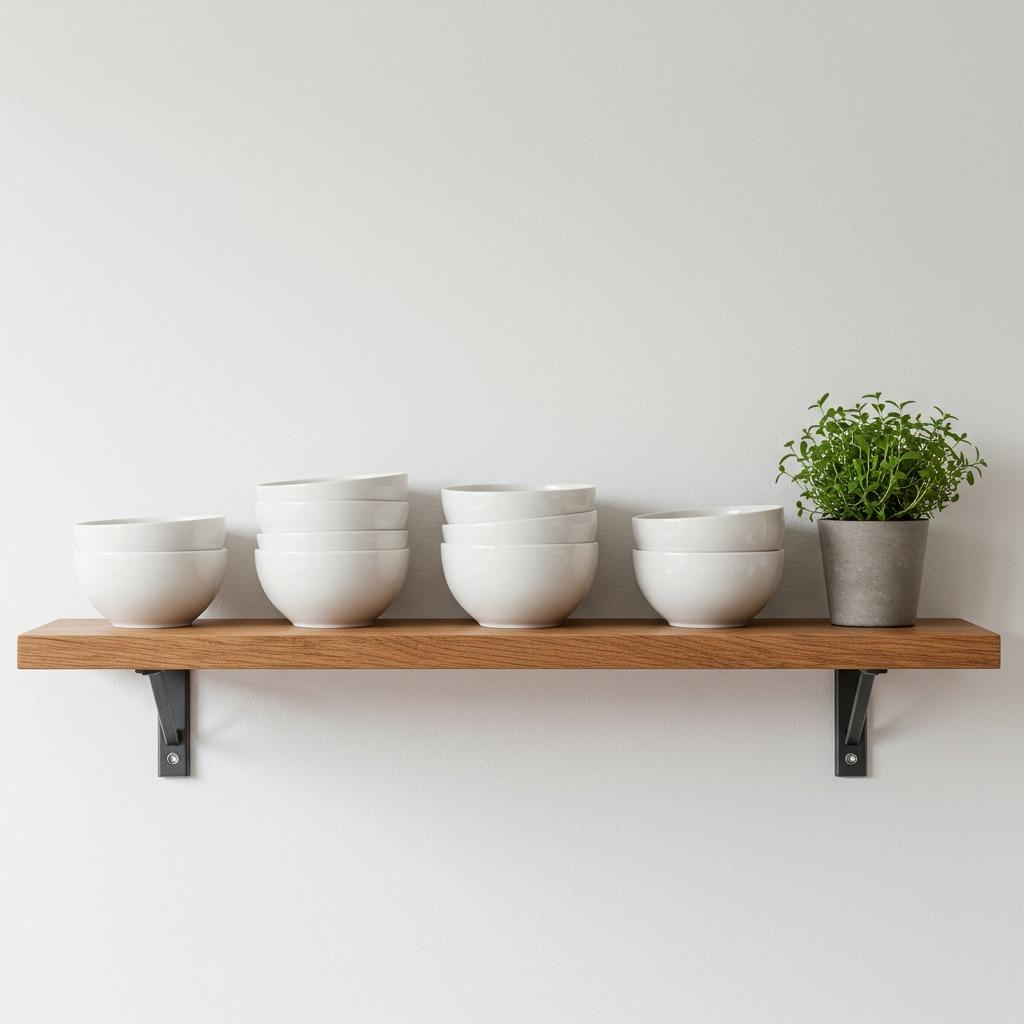
Open shelving can work beautifully in minimalist spaces, but only if you’re selective about what goes on display. This isn’t the place to showcase your entire dish collection.
Choose items that are both functional and visually cohesive. A set of matching white dishes looks intentional. A mix of random mugs and plates? Not so much. Some people display their everyday dishes on open shelves, which works if everything coordinates.
Limit yourself to one or two open shelves rather than an entire wall. Too much open storage can feel cluttered even if it’s organized. The idea is to create visual interest without overwhelming the space.
And be realistic about maintenance. Open shelves collect dust and grease. If you’re not willing to wipe them down regularly, stick with closed cabinets. There’s no shame in choosing function over a Pinterest-perfect look.
5. Invest in Built-In Storage Solutions
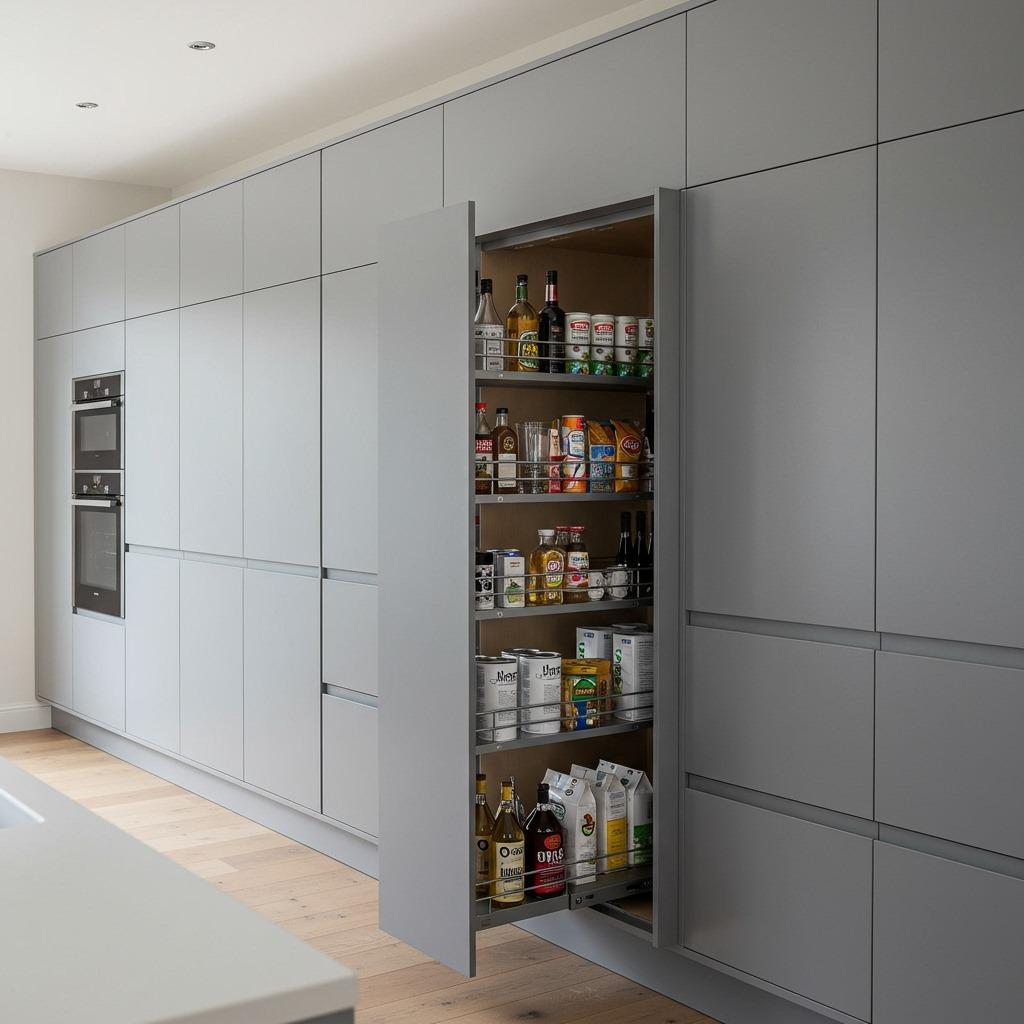
Built-in storage is the secret weapon of minimalist kitchen decor. When everything has a specific place, it’s easy to keep surfaces clear and maintain organization long-term.
Deep drawers with dividers work better than traditional cabinets for pots and pans. You can see everything at once instead of digging through stacks. Pull-out pantry shelves bring items from the back to the front with one motion.
Corner cabinets with lazy Susans or pull-out systems make use of awkward spaces. Drawer organizers for utensils, spices, and cooking tools prevent the junk drawer chaos that plagues most kitchens.
If you’re planning a kitchen renovation, prioritize smart storage over fancy finishes. You’ll appreciate the functionality every single day, whereas a trendy backsplash might feel dated in a few years.
6. Keep Only Your Most-Used Dishes and Tools

How many plates do you actually need? For most people, eight is plenty. Twelve if you entertain regularly. Yet many of us have cabinets stuffed with dishes we never use.
Go through your kitchen and pull out everything you haven’t used in the past month. Be honest about what you actually cook with. That fancy pasta maker you’ve used twice? The duplicate spatulas? The mismatched Tupperware?
Keep multiples only when they make sense. You probably need several coffee mugs and water glasses. But do you really need three vegetable peelers or five wooden spoons?
This process creates physical space in your cabinets, which makes everything easier to access. But it also creates mental space. When you open a drawer and see exactly what you need without digging, cooking feels simpler.
7. Choose Quality Over Quantity for Cookware
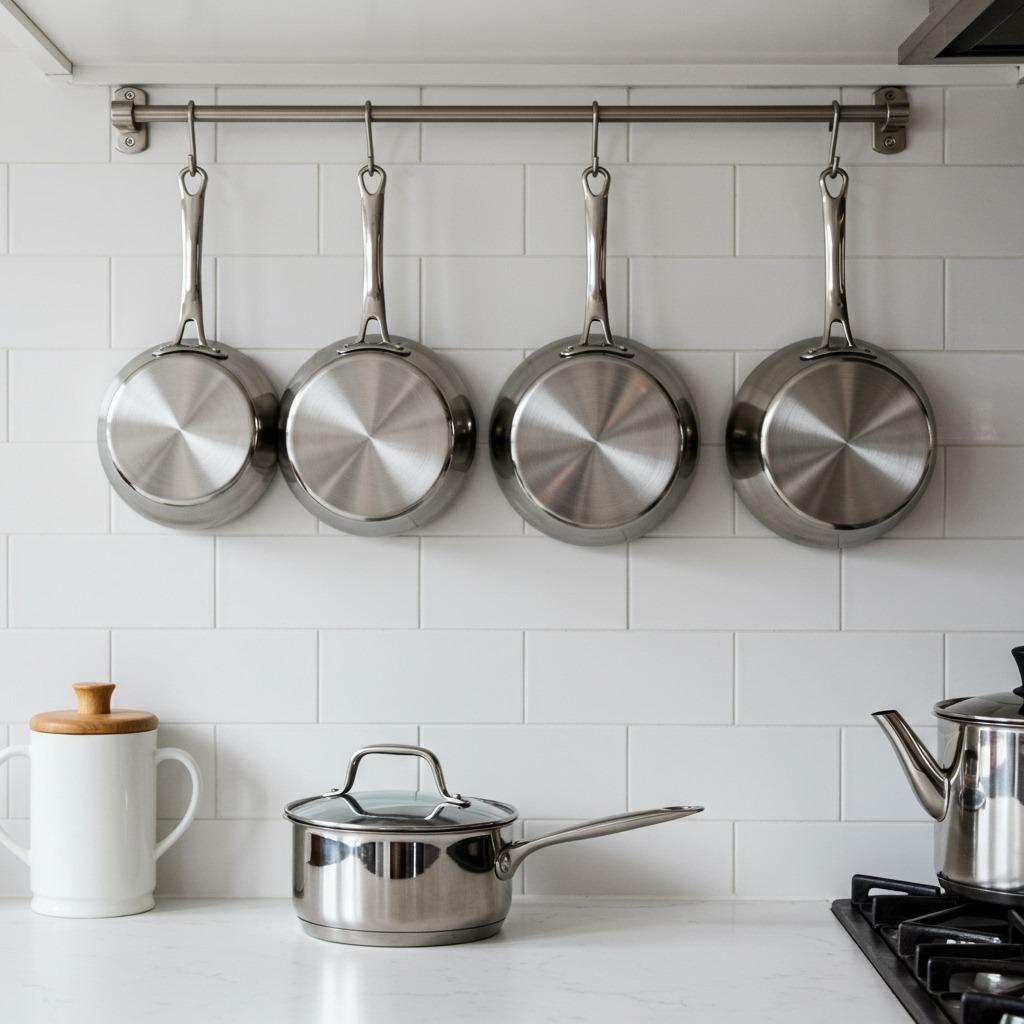
Instead of twenty mediocre pans, invest in five really good ones. A large skillet, a small saucepan, a medium pot, a large stockpot, and maybe a cast-iron pan. That’s genuinely all most home cooks need.
Quality cookware performs better, lasts longer, and often looks better too. Matching pieces create visual cohesion if you store them on open shelves or hang them. Even if they’re hidden in cabinets, fewer pieces mean easier storage.
The same principle applies to kitchen tools. One excellent chef’s knife beats a block full of dull knives. A sturdy wooden cutting board is better than five flimsy plastic ones.
When you focus on quality, you naturally buy less. Good tools cost more upfront but save money over time because you’re not constantly replacing cheap items. Plus, caring for fewer high-quality pieces is actually enjoyable rather than overwhelming.
8. Create a Clean Backsplash Design

Your backsplash sets the tone for the entire kitchen. Busy patterns and multiple materials can make even an organized space feel chaotic. Simple tiles in a single color create a calm backdrop.
White subway tiles remain popular in minimalist kitchens for good reason. They’re timeless, easy to clean, and they don’t compete with other design elements. Large-format tiles work well too since they have fewer grout lines.
Some people skip tile entirely and extend their countertop material up the wall. This creates seamless lines and eliminates grout cleaning. It’s more expensive but incredibly sleek.
Whatever you choose, avoid the temptation to display items on the backsplash. No spoon rests, no decorative tiles spelling out “EAT” or “GATHER.” Let the material itself be the design feature. Much like modern bathroom tile choices, simplicity often makes the biggest impact.
9. Maximize Under-Sink Storage
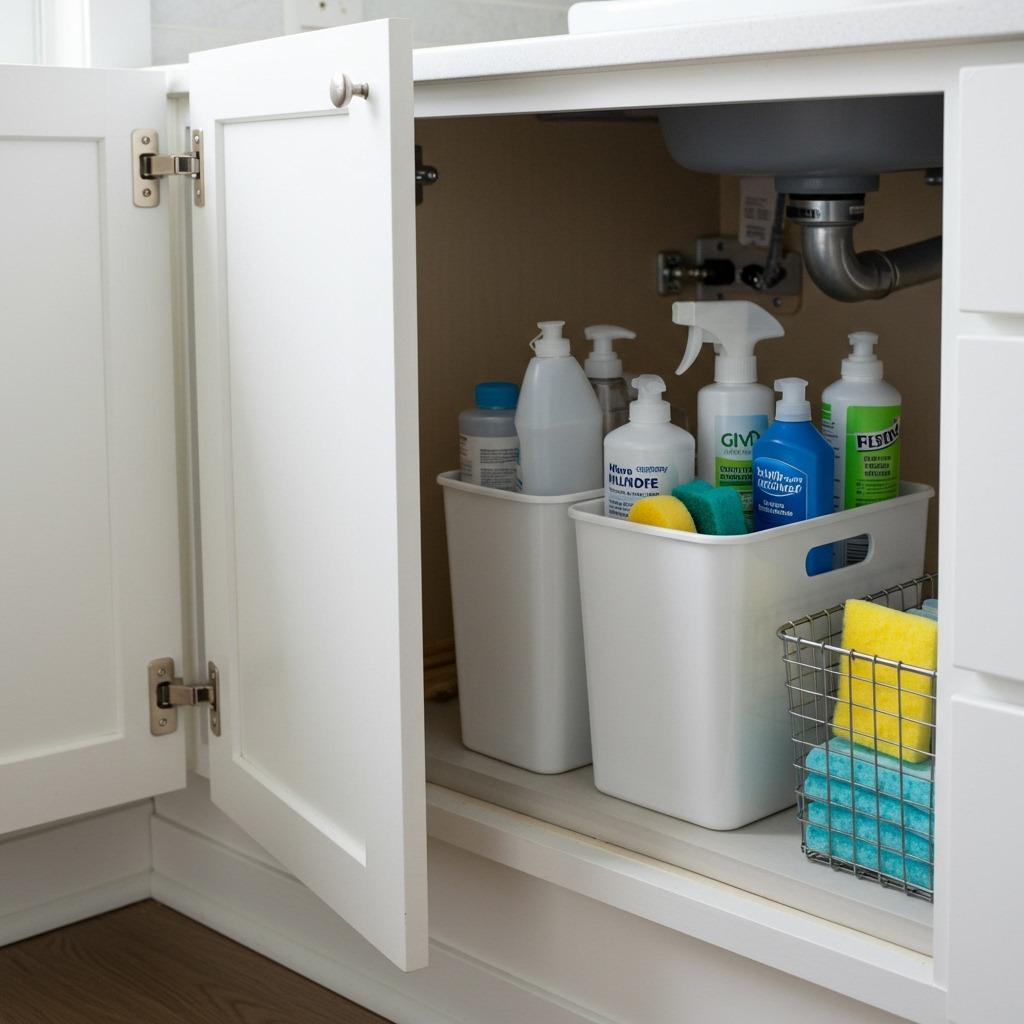
The area under your sink is prime real estate that often becomes a chaotic mess of cleaning products and grocery bags. A little organization here keeps those items accessible without cluttering other spaces.
Start with a pull-out trash and recycling system. These keep bins hidden but easy to reach. Add a small caddy or shelf organizer for cleaning supplies. Hooks on the inside of the cabinet door can hold dish towels or gloves.
Store only what you actually use. If you have five half-empty bottles of the same cleaner, consolidate. Those mystery cleaning products you bought two years ago? Probably time to let them go.
This hidden storage supports your minimalist aesthetic by keeping necessities out of sight. You maintain a clean, uncluttered look without sacrificing function or making daily tasks harder.
10. Install Task Lighting Under Cabinets
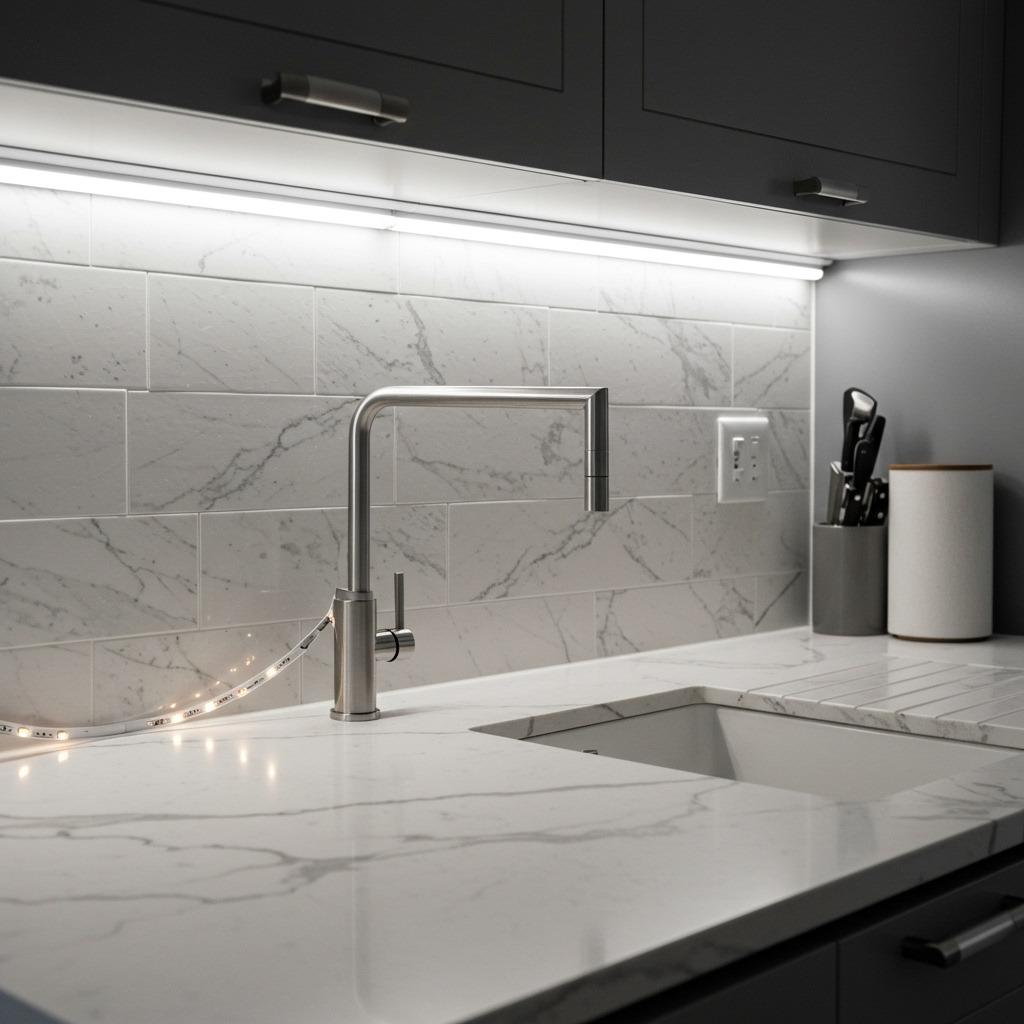
Good lighting is essential in a minimalist kitchen, but it needs to be functional rather than decorative. Under-cabinet lighting illuminates work surfaces without adding visual clutter.
LED strip lights are nearly invisible when installed properly. They provide bright, even light for food prep without the bulk of traditional fixtures. Some are battery-operated, which makes installation easier if you’re not doing a full renovation.
Pendant lights over an island or dining area can add personality, but keep them simple. A single sculptural pendant makes a statement. Three matching pendants in a row create rhythm. Avoid overly ornate fixtures that fight with the clean aesthetic.
Natural light is your best friend in minimalist spaces. If possible, keep window treatments minimal. Sheer curtains or simple blinds let in maximum light while still providing privacy when needed.
11. Display One or Two Meaningful Items
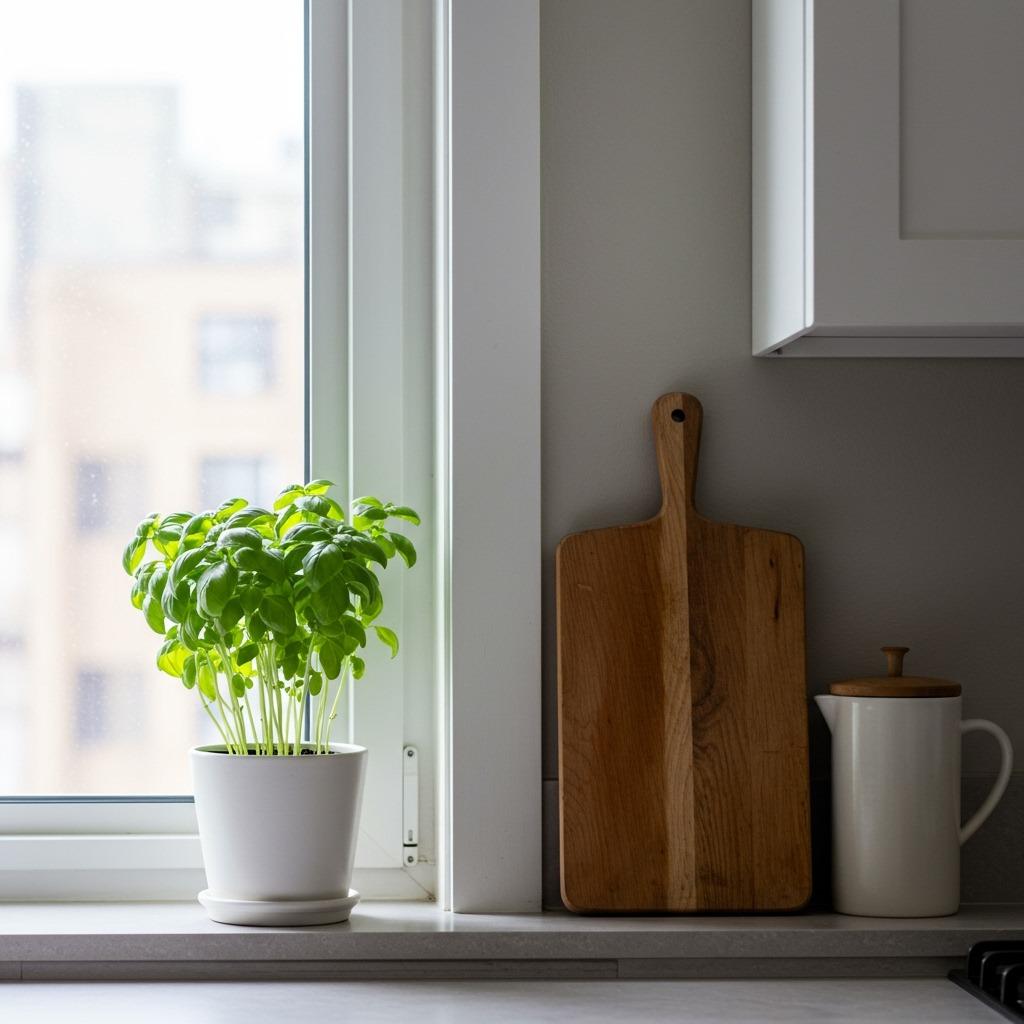
Total minimalism can feel cold and uninviting. A couple of carefully chosen items add warmth without creating clutter. The key word is “carefully chosen.”
A beautiful cutting board leaning against the backsplash serves as both function and art. Fresh herbs in a simple pot bring life to the space. A bowl of lemons adds a pop of color and a fresh scent.
Choose items you actually use or that genuinely make you happy. Skip the mass-produced “KITCHEN” signs and staged vignettes that don’t reflect how you live. Authenticity matters more than copying Pinterest.
Rotate items seasonally if you like. Maybe fresh flowers in spring, a small pumpkin in fall. But always stick to one or two things maximum. The moment your counter starts looking “decorated,” you’ve probably gone too far.
12. Embrace Negative Space

Empty space isn’t wasted space. In minimalist design, what you leave out is just as important as what you include. Those bare walls and clear surfaces are doing important visual work.
Negative space gives your eyes a place to rest. It makes the kitchen feel larger and more open. It highlights the elements you do have rather than letting them get lost in a sea of stuff.
This concept applies to walls too. You don’t need to fill every surface with art or shelving. A single piece of artwork or one open shelf can be enough. The white space around it makes it more impactful.
The same thinking extends to storage. Don’t pack cabinets so full that you struggle to close doors. Leave breathing room. Everything should slide out easily. This approach to small space design often makes rooms feel twice their actual size.
13. Choose Handleless or Simple Hardware
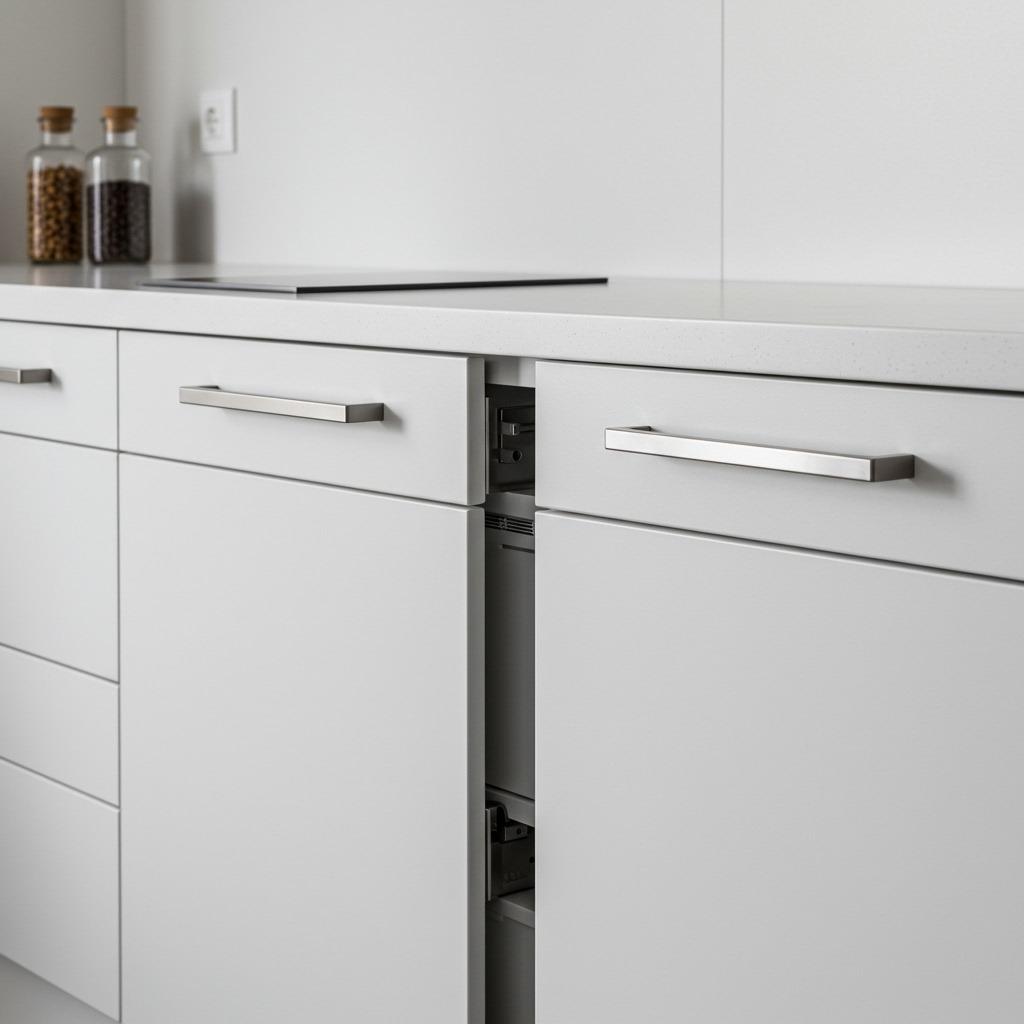
Cabinet hardware seems like a small detail, but it significantly impacts the overall aesthetic. Minimalist kitchens often feature handleless cabinets with push-to-open mechanisms or recessed pulls.
If you prefer traditional handles, choose simple designs. Sleek horizontal bars in matte black or brushed nickel work well. Avoid ornate knobs with decorative details that add visual complexity.
Consistency matters. All hardware should match throughout the kitchen. Mixing metals or styles breaks the clean lines you’re trying to achieve.
Some designers integrate handles into the cabinet design itself. A groove routed into the top edge of a drawer serves as a pull without adding extra hardware. It’s a subtle detail that maintains the streamlined look.
14. Keep the Sink Area Completely Clear

The sink area is a clutter magnet. Dish soap bottles, sponge holders, scrub brushes – they multiply quickly. But keeping this zone clear makes a dramatic difference in how clean the kitchen feels.
Store dish soap in a pump bottle inside the sink cabinet or in a drawer. Keep sponges in a small container under the sink, pulling one out only when needed. The same goes for hand soap – if there’s room, move it inside a cabinet.
If you must keep soap at the sink, choose a beautiful dispenser that coordinates with your faucet finish. Stainless steel or matte black dispensers look intentional rather than afterthought.
This approach might feel extreme at first. But once you get used to clear counters, going back to visible clutter becomes unthinkable. It’s one of those small changes that completely shifts how polished your kitchen looks.
15. Use Matching Containers for Pantry Storage
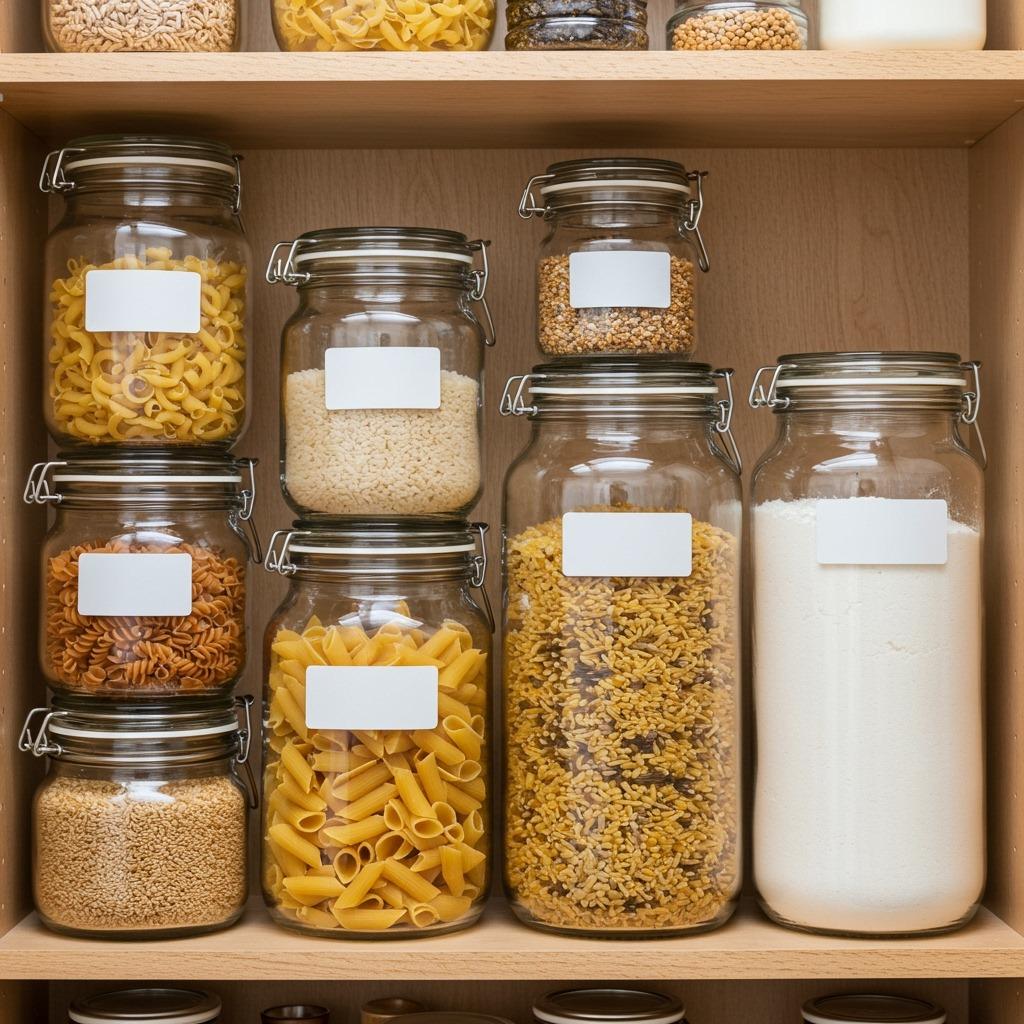
When you open your pantry, you should see order, not chaos. Transferring dry goods into matching containers creates instant visual calm and makes it easier to see what you have.
Clear glass or plastic containers let you check inventory at a glance. Square or rectangular shapes use space more efficiently than round ones. Choose a size that works for your family’s consumption patterns.
Label containers simply. A small tag with the contents name is enough. No need for elaborate calligraphy or decorative elements. The uniformity of the containers themselves creates the appealing look.
This system also helps you maintain a minimalist approach to food storage. When containers are full, you know you don’t need to buy more. It prevents the accumulation of half-empty bags and forgotten ingredients hiding in corners. The principles here align well with those smart home improvement strategies that make daily life run smoother.
16. Install a Pot Filler for Cleaner Counters
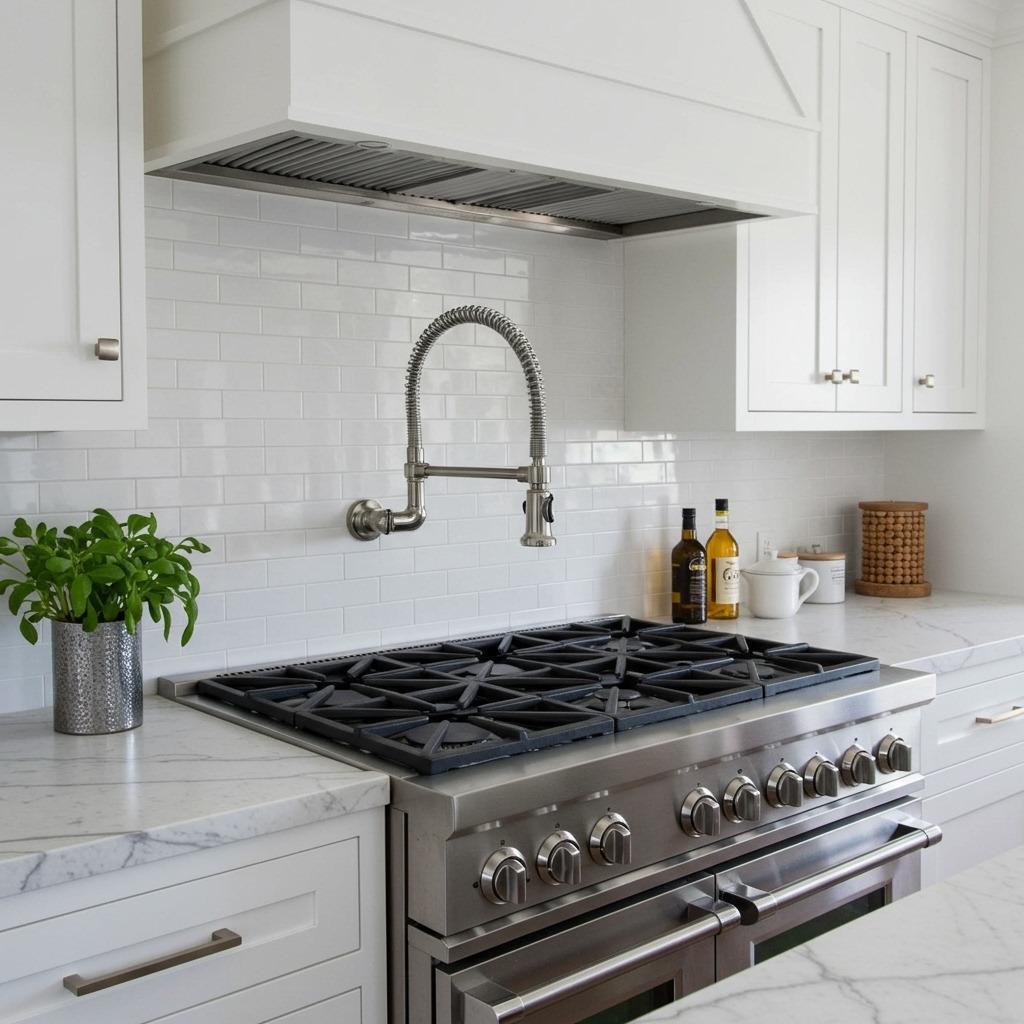
Here’s an upgrade that adds function while reducing counter clutter. A pot filler faucet mounted on the wall above your stove eliminates the need to carry heavy pots of water across the kitchen.
This means fewer drips on your counters and floors. It also means you can skip the kettle on the stovetop if you’re filling pots directly. The fixture itself is typically quite minimal – just a folding arm that tucks flat against the wall when not in use.
Pot fillers work best in kitchens where the stove is against a wall rather than on an island. They require plumbing work, so this is more of a renovation-level upgrade than a quick fix.
But if you’re already remodeling, it’s worth considering. The convenience is real, and it’s one of those features that enhances a minimalist aesthetic by removing clutter rather than adding decoration.
17. Choose Integrated Appliances
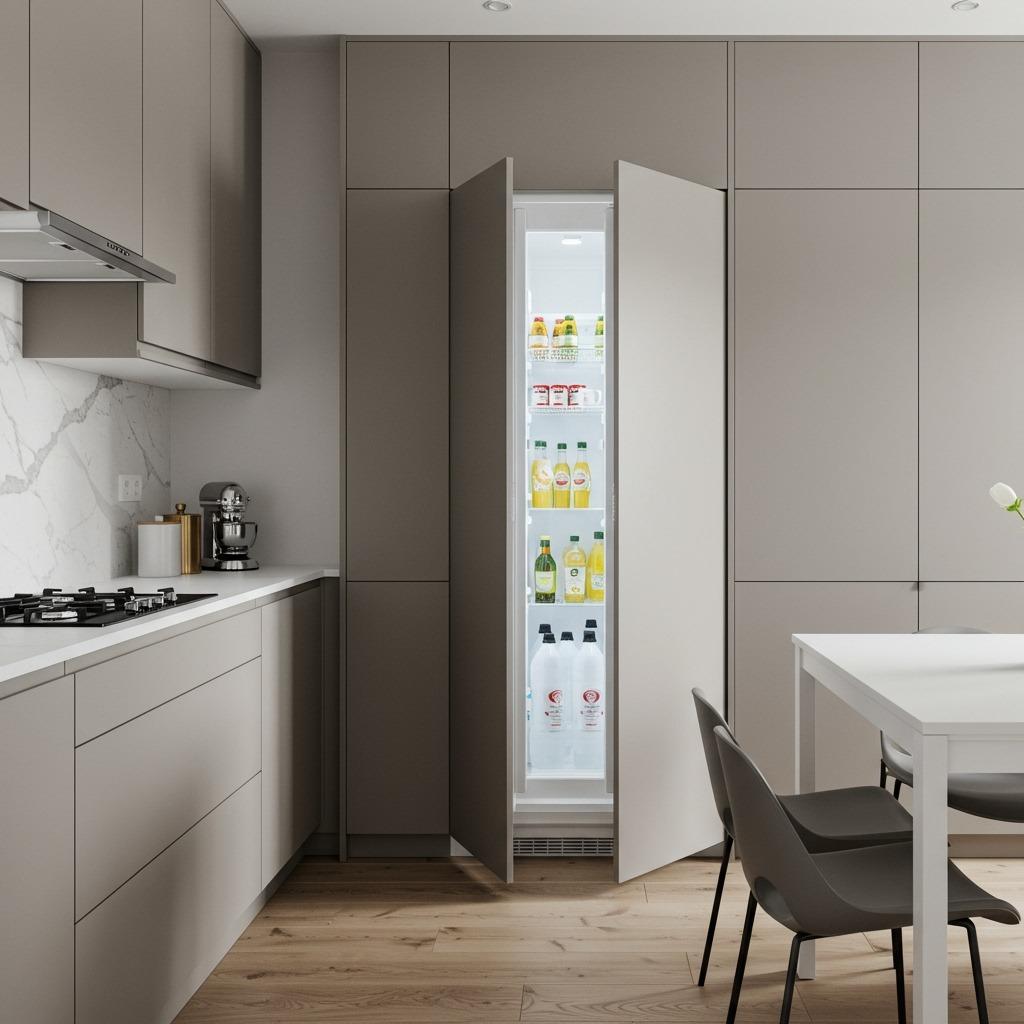
Integrated appliances hide behind cabinet panels, creating a seamless, uninterrupted look. The refrigerator, dishwasher, and even microwave blend into the cabinetry rather than standing out as separate elements.
This approach is common in European kitchens and increasingly popular in modern American designs. It’s definitely a higher-end option, but the visual impact is significant.
If full integration isn’t in your budget, choose appliances in a single finish that complements your cabinets. All stainless steel or all white creates more cohesion than a mix of finishes.
Counter-depth refrigerators, even when not fully integrated, provide a cleaner look by sitting flush with cabinets rather than protruding into the space. It’s a small detail that makes the kitchen feel more streamlined.
18. Create a Coffee Station in a Cabinet

If you’re a daily coffee drinker, hiding the whole setup seems impractical. Instead, dedicate a cabinet to a coffee station where everything lives together.
A pull-out shelf holds the coffee maker. Mugs hang on hooks inside the cabinet door. Coffee, filters, and sugar live on a small turntable or in labeled containers. When you want coffee, you open the cabinet and have everything at hand.
Some people leave the cabinet door open while making coffee, then close it when done. Others install a cabinet with a lift-up door or remove the door entirely, essentially creating a small appliance garage.
This keeps your morning routine simple without compromising your minimalist aesthetic. The coffee maker doesn’t become a permanent counter fixture, but you’re not hauling it out of storage every morning either.
19. Limit Fridge Magnets and Clutter

The front of your refrigerator is often the most cluttered surface in the kitchen. Report cards, appointment reminders, takeout menus, magnets from every vacation. It all adds up to visual chaos.
Try living with a completely clear fridge for one week. Move important papers to a bulletin board in a home office or mudroom. Take photos of takeout menus instead of keeping the physical copies. Use a calendar app for appointments.
You might find that most of what was on your fridge wasn’t actually necessary. The habit of sticking things there was just automatic. Breaking that habit opens up a huge visual expanse that stays clean.
If you absolutely need a family command center, consider installing a small chalkboard or bulletin board inside a pantry door. It serves the same purpose without cluttering the most visible surface in your kitchen.
20. Maintain Daily Cleaning Habits
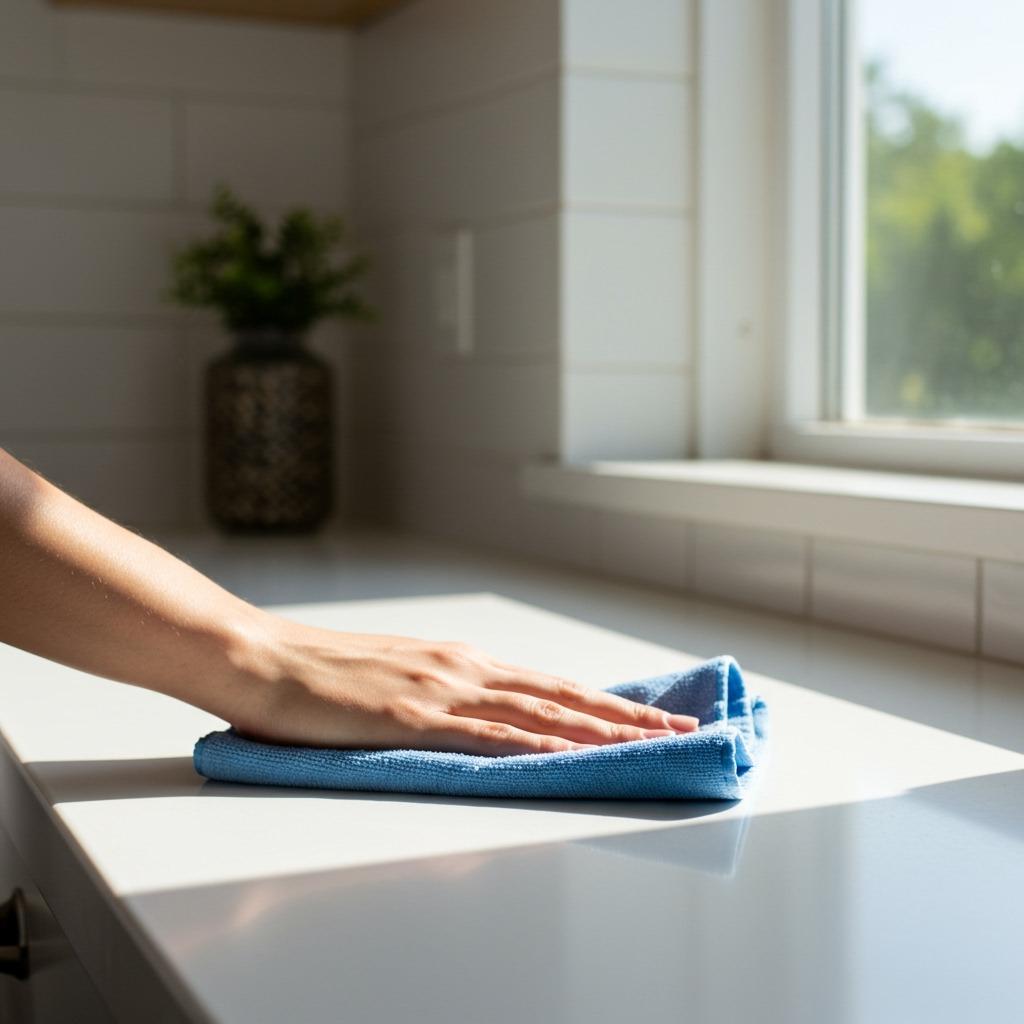
The most beautiful minimalist kitchen still needs maintenance. The difference is that with less stuff, maintaining it takes minutes instead of hours.
Make it a habit to clear and wipe counters every evening. Put away any items that migrated out during the day. Run the dishwasher or hand wash dishes so the sink stays empty. It takes maybe ten minutes.
Do a weekly purge of the refrigerator. Toss expired items, wipe down shelves, and reorganize as needed. With less in there, this takes no time at all.
The goal isn’t perfection. Life happens, and sometimes dishes pile up. But when your baseline is minimal, even a messy day doesn’t create the same overwhelming chaos. Getting back to clean is quick because there’s simply less to deal with.
Creating a minimalist kitchen isn’t about deprivation or following rigid rules. It’s about making intentional choices that reduce clutter and stress while making your space genuinely work better for you.
Start small if the whole transformation feels overwhelming. Clear your counters this week. Next week, tackle that junk drawer. The month after, reorganize your pantry. Each small change builds on the last until you’ve created a kitchen that feels calm and functional.
The beauty of this approach is that it adapts to your life rather than forcing you into someone else’s aesthetic. Maybe you keep more items out than a hardcore minimalist would. That’s fine. The question is always: does this item earn its place by being useful or bringing real joy?
Your kitchen should support how you actually cook and live, not just look good in photos. When you get that balance right – enough function, minimal clutter, and a dose of personality – you’ll have created something truly special. A space that’s not just on-trend, but genuinely makes every day a little bit easier.

